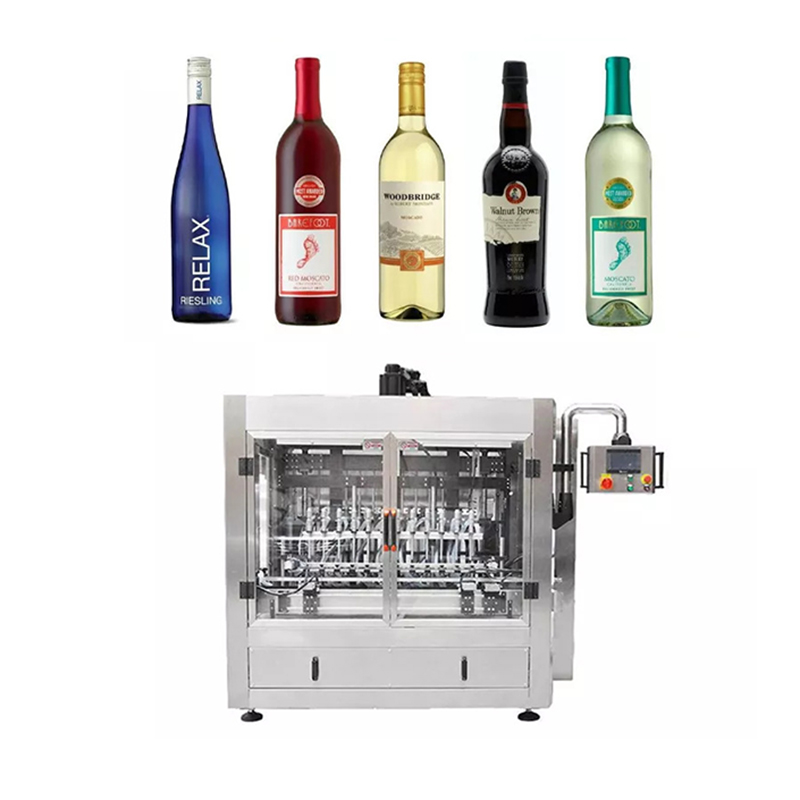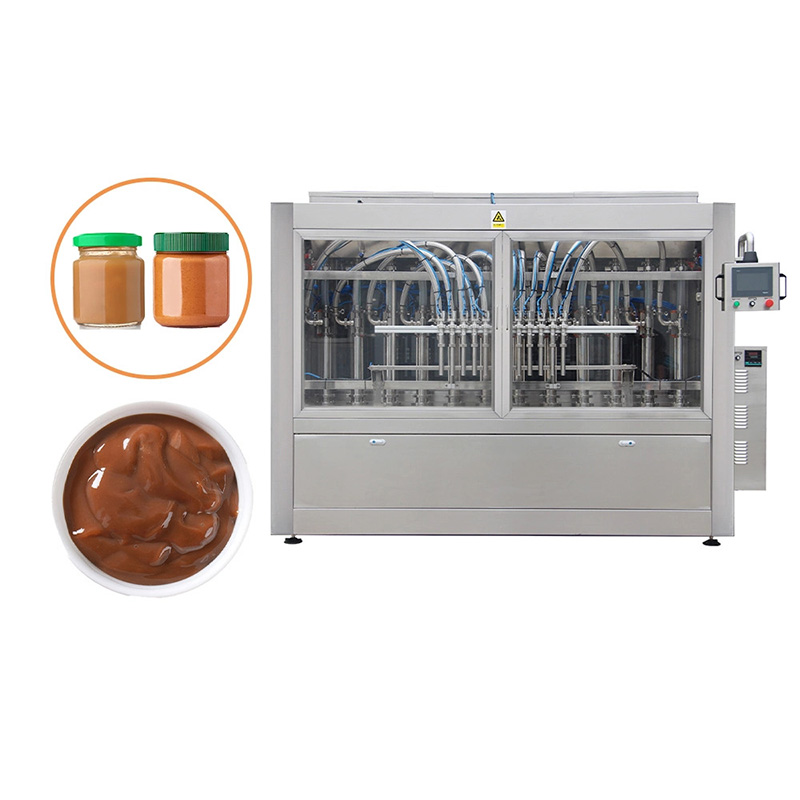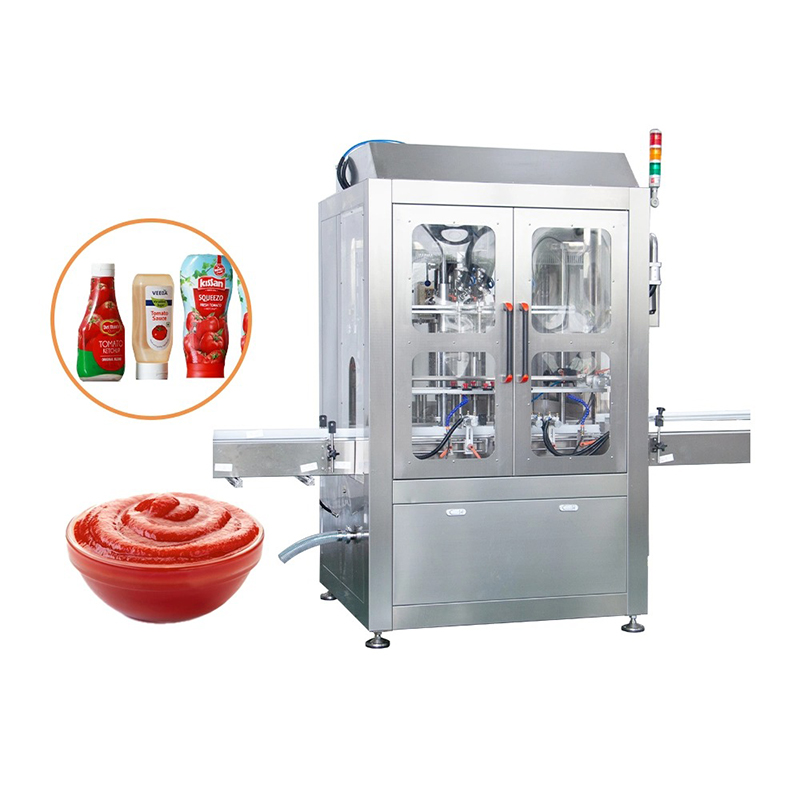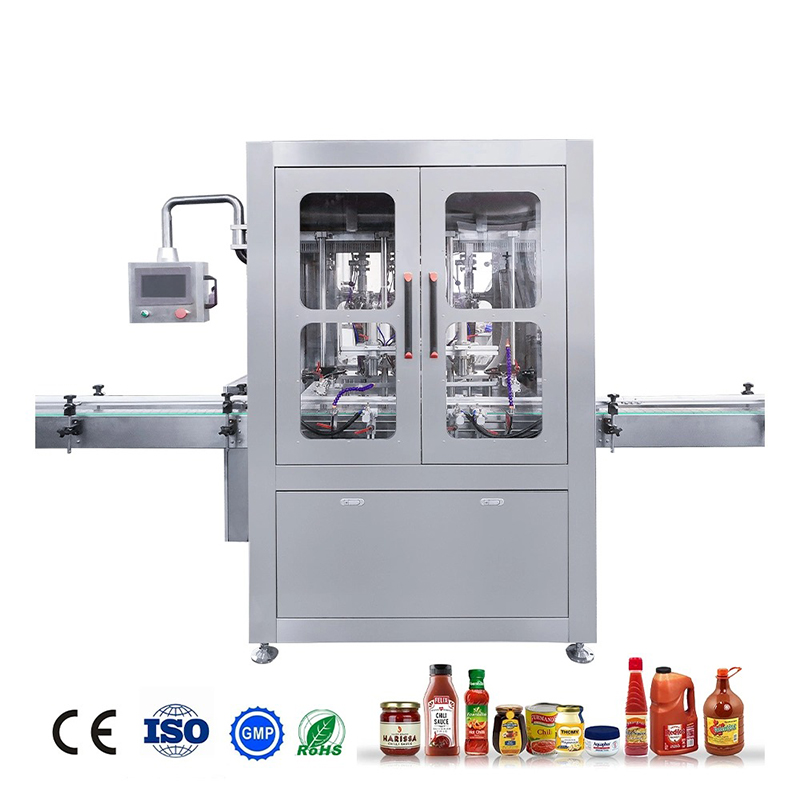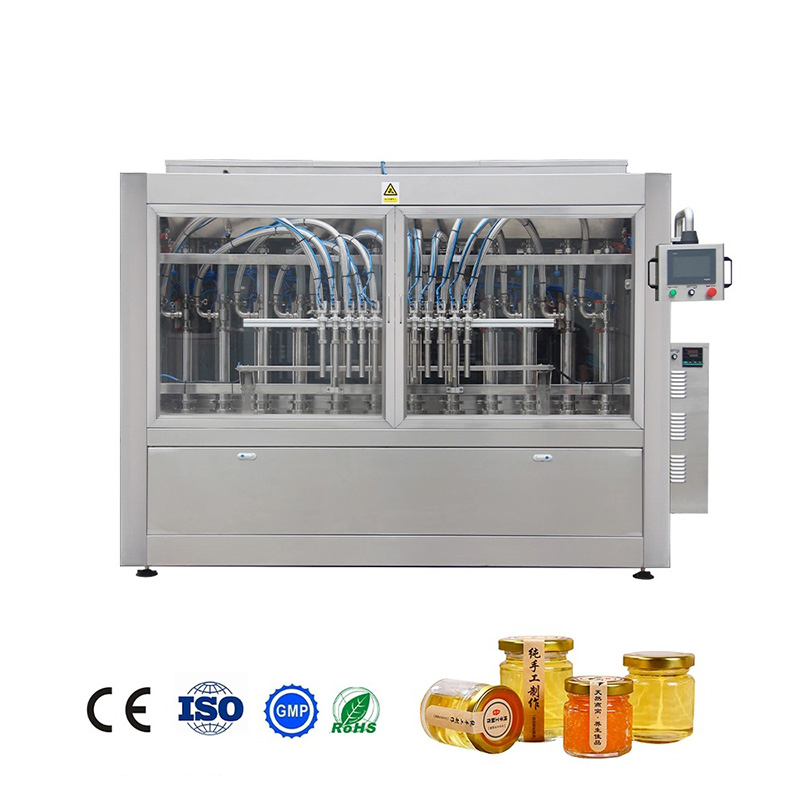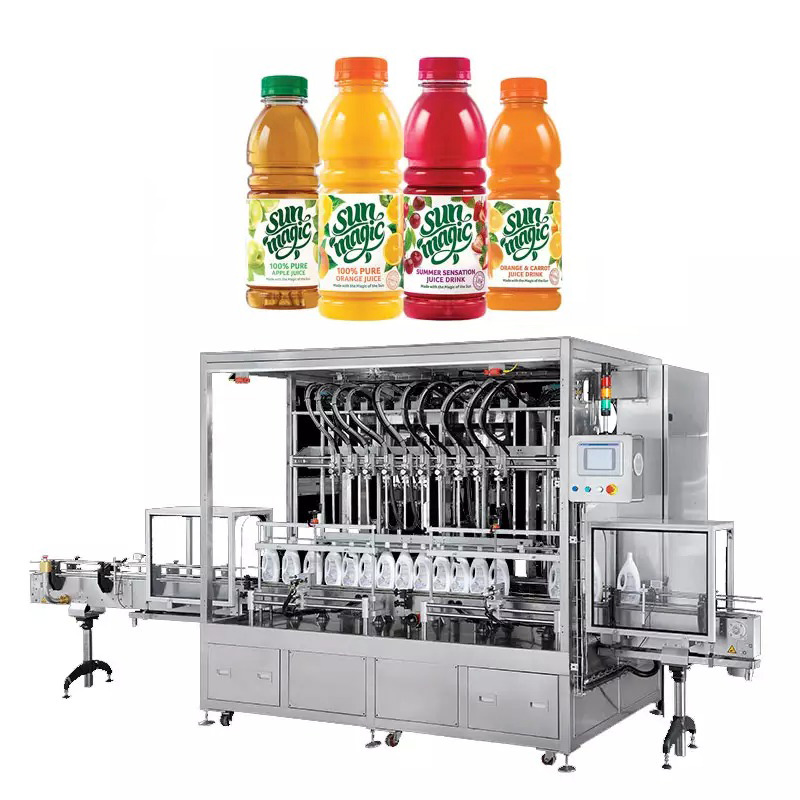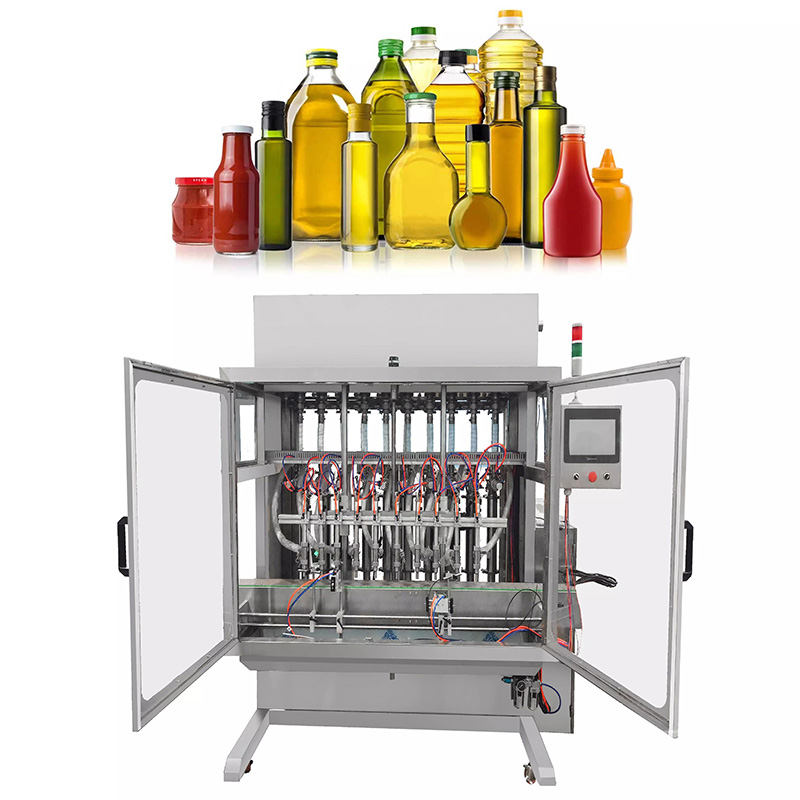What is a food filling machine?
A food filling machine is a machine that is used to automatically fill containers with food products. These machines can be used to fill a variety of food products, including liquids, pastes, and solids. They are commonly used in the food processing industry to package products for distribution and sale.
Food filling machines can be designed for specific types of containers, such as bottles, cans, pouches, or bags. They can also be designed to handle specific types of food products, such as dairy products, sauces, condiments, or baked goods. Some food filling machines are designed to handle a range of products, while others are specialized for a particular type of product.
Food filling machines can operate in a variety of ways, depending on the type of product being filled. Some use gravity or pressure to fill containers, while others use pumps or other mechanical devices to dispense the product. Some food filling machines are also equipped with additional features, such as labeling or capping equipment, to help automate the packaging process.
Food filling machines are an important part of the food processing industry, as they help to efficiently package and distribute food products. They can be used in a variety of settings, including factories, warehouses, and distribution centers.
What types of food can be filled using a filling machine?
Food filling machines can be used to fill a wide variety of food products, including liquids, pastes, and solids. Some examples of food products that can be filled using a filling machine include:
Beverages:
Beverages such as juices, sodas, and sports drinks can be filled using a filling machine. These machines can be designed to handle different types of containers, such as bottles, cans, or pouches.
Dairy products:
Dairy products such as milk, yogurt, and cheese can be filled using a filling machine. These machines can be designed to handle different types of containers, such as bottles, cups, or pouches.
Sauces and condiments:
Sauces and condiments such as ketchup, mustard, and mayonnaise can be filled using a filling machine. These machines can be designed to handle different types of containers, such as bottles, jars, or pouches.
Baked goods:
Baked goods such as cookies, crackers, and snack bars can be filled using a filling machine. These machines can be designed to handle different types of containers, such as bags, boxes, or pouches.
Meat and poultry products:
Meat and poultry products such as ground beef, chicken breasts, and deli meats can be filled using a filling machine. These machines can be designed to handle different types of containers, such as bags, trays, or pouches.
Food filling machines can be designed to handle a wide range of food products, and they can be customized to meet the specific needs of different types of food processing operations.
How does a food filling machine work?
Food filling machines work by automatically filling containers with a specific volume or weight of food product. The specific way in which a filling machine operates will depend on the type of product being filled and the type of container being used. However, most food filling machines operate using one of the following methods:
Gravity filling:
In gravity filling, the product is placed in a hopper or tank above the containers to be filled. The product is then allowed to flow into the containers under the force of gravity. This method is often used for filling containers with liquids or products with a relatively low viscosity.
Pressure filling:
In pressure filling, the product is placed in a hopper or tank above the containers to be filled. The product is then forced into the containers using pressurized air or a mechanical device, such as a piston. This method is often used for filling containers with products with a higher viscosity, such as pastes or gels.
Pump filling:
In pump filling, the product is placed in a hopper or tank, and a mechanical pump is used to transfer the product into the containers. This method is often used for filling containers with products that are too thick to be gravity filled or too thin to be pressure filled.
Volumetric filling:
In volumetric filling, the filling machine measures the volume of product being dispensed into each container. This method is often used to ensure that each container is filled with a consistent and accurate amount of product.
Weight filling:
In weight filling, the filling machine measures the weight of the product being dispensed into each container. This method is also often used to ensure that each container is filled with a consistent and accurate amount of product.
Food filling machines can be designed to handle a wide range of products and containers. Some food filling machines are equipped with additional features, such as labeling or capping equipment, to help automate the packaging process.
How do I choose the right filling machine for my needs?
There are several factors to consider when choosing the right filling machine for your needs:
Type of product:
The type of product you will be filling is an important factor to consider when choosing a filling machine. Different filling machines are designed to handle specific types of products, such as liquids, pastes, or solids. Make sure to choose a machine that is suitable for your product.
Container type:
The type of container you will be using is also an important factor to consider when choosing a filling machine. Different filling machines are designed to handle specific types of containers, such as bottles, cans, pouches, or bags. Make sure to choose a machine that is compatible with your containers.
Production capacity:
Consider the production capacity you will need from your filling machine. How many containers do you need to fill per hour? How many containers do you need to fill per day? Make sure to choose a machine that is capable of meeting your production needs.
Product viscosity:
The viscosity of your product will also impact the type of filling machine you choose. Products with a low viscosity, such as liquids, can typically be filled using a gravity filling machine. Products with a higher viscosity, such as pastes or gels, may require a pressure filling machine.
Price:
Price is an important factor to consider when choosing a filling machine. Make sure to choose a machine that fits your budget, but also keep in mind that the cheapest option may not always be the best choice.
Brand reputation:
Consider the reputation of the manufacturer or brand when choosing a filling machine. Look for companies with a history of producing high-quality, reliable machines.
Maintenance and support:
Make sure to choose a filling machine that is easy to maintain and has good support from the manufacturer. This will help to minimize downtime and ensure that your machine is operating at its best.
By considering these factors, you can choose a filling machine that is well-suited to your needs and will help you to efficiently and effectively package your food products.
How much does a food filling machine cost?
The cost of a food filling machine can vary widely, depending on the type of machine, the size and capacity of the machine, and the features it includes. Some food filling machines can cost as little as a few thousand dollars, while others can cost hundreds of thousands of dollars.
Here are some rough price ranges for different types of food filling machines:
Semi-automatic filling machines:
These machines are manually operated and typically cost between $1,000 and $10,000.
Automatic filling machines:
These machines are fully automated and typically cost between $10,000 and $100,000.
High-speed filling machines:
These machines are designed for high-volume production and can fill hundreds or thousands of containers per hour. They can cost anywhere from $100,000 to $500,000 or more.
Keep in mind that these prices are rough estimates and will vary depending on the specific features and capabilities of the machine. It’s important to carefully consider your needs and budget when choosing a filling machine. It may also be worth it to invest in a higher-quality, more expensive machine if it will save you money in the long run by increasing efficiency and reducing downtime.
What are the different types of filling machine technologies available?
There are several types of filling machine technologies available, including:
Gravity filling:
In gravity filling, the product is placed in a hopper or tank above the containers to be filled. The product is then allowed to flow into the containers under the force of gravity. This method is often used for filling containers with liquids or products with a relatively low viscosity.
Pressure filling:
In pressure filling, the product is placed in a hopper or tank above the containers to be filled. The product is then forced into the containers using pressurized air or a mechanical device, such as a piston. This method is often used for filling containers with products with a higher viscosity, such as pastes or gels.
Pump filling:
In pump filling, the product is placed in a hopper or tank, and a mechanical pump is used to transfer the product into the containers. This method is often used for filling containers with products that are too thick to be gravity filled or too thin to be pressure filled.
Volumetric filling:
In volumetric filling, the filling machine measures the volume of product being dispensed into each container. This method is often used to ensure that each container is filled with a consistent and accurate amount of product.
Weight filling:
In weight filling, the filling machine measures the weight of the product being dispensed into each container. This method is also often used to ensure that each container is filled with a consistent and accurate amount of product.
There are also filling machines that combine multiple technologies, such as gravity and pressure filling, or volumetric and weight filling. These machines can be used to fill a wider range of products and may offer additional accuracy and control.
How do I calculate the speed and output of a filling machine?
To calculate the speed and output of a filling machine, you will need to know the following information:
- The volume or weight of product being dispensed per container: This will be expressed in units of volume (such as milliliters or ounces) for liquid products, or units of weight (such as grams or pounds) for solid products.
- The number of containers being filled per minute: This is the speed at which the filling machine is operating. It is typically expressed in units of containers per minute.
Once you have this information, you can use the following formula to calculate the output of the filling machine:
Output = (Volume or weight of product per container) * (Number of containers per minute)
For example, if a filling machine is filling 8-ounce containers of liquid at a rate of 100 containers per minute, the output would be:
Output = (8 ounces) * (100 containers/minute) = 800 ounces/minute
This output could also be expressed as 50,000 ounces per hour (800 ounces/minute * 60 minutes/hour = 50,000 ounces/hour).
By calculating the output of a filling machine, you can determine how quickly the machine is able to fill containers and how much product it can produce in a given period of time. This information can be useful for planning production schedules and for determining the capacity of the filling machine.
What are the advantages of using a food filling machine?
There are several advantages to using a food filling machine:
Increased efficiency:
Food filling machines can fill containers much more quickly and accurately than manual filling methods. This can help to increase the efficiency of your food processing operation, allowing you to produce more product in a shorter amount of time.
Improved consistency:
Food filling machines can dispense consistent amounts of product into each container, ensuring that all of your products are of the same quality and volume. This can help to improve customer satisfaction and reduce waste.
Enhanced hygiene:
Food filling machines can help to improve hygiene in your food processing operation by reducing the risk of contamination from human hands. This can help to reduce the risk of foodborne illness and improve the safety of your products.
Reduced labor costs:
Using a food filling machine can reduce the amount of labor needed for filling and packaging operations. This can help to reduce labor costs and improve the efficiency of your food processing operation.
Increased production capacity:
Food filling machines can handle large volumes of product, allowing you to increase your production capacity and meet the demands of your customers.
Overall, using a food filling machine can help to improve the efficiency, consistency, and hygiene of your food processing operation, as well as increase your production capacity and reduce labor costs.
How do I maintain and clean my filling machine?
Here are some tips for maintaining and cleaning your filling machine:
Follow the manufacturer’s instructions:
The manufacturer of your filling machine should provide specific instructions for maintaining and cleaning the machine. Make sure to follow these instructions carefully to ensure the best performance and longevity of the machine.
Clean the machine regularly:
It’s important to clean your filling machine regularly to prevent the build-up of food residue or contaminants. Use a mild detergent or sanitizer and follow the manufacturer’s instructions for cleaning the machine.
Keep the machine lubricated:
Many filling machines have moving parts that require lubrication to operate smoothly. Follow the manufacturer’s instructions for lubricating the machine and make sure to use the correct type of lubricant.
Check for wear and tear:
Regularly inspect the machine for wear and tear, and replace any worn or damaged parts as necessary. This can help to prevent breakdowns and extend the life of the machine.
Perform regular maintenance:
Follow a regular maintenance schedule to ensure that the machine is in good working order. This may include tasks such as cleaning and lubricating the machine, checking and replacing worn parts, and performing routine inspections.
By following these tips, you can help to ensure that your filling machine is well-maintained and operating at its best. This can help to minimize downtime and ensure that your machine is producing high-quality products.
Can filling machines be customized to meet specific needs?
Yes, filling machines can often be customized to meet specific needs. Many filling machine manufacturers offer a range of customization options to help meet the specific needs of their customers.
Some examples of customization options that may be available include:
Container size and shape:
Filling machines can be customized to handle specific sizes and shapes of containers, such as bottles, cans, pouches, or bags.
Product type:
Filling machines can be customized to handle specific types of products, such as liquids, pastes, or solids.
Production capacity:
Filling machines can be customized to meet different production capacity needs, ranging from low-volume to high-volume production.
Additional features:
Filling machines can be equipped with additional features, such as labeling or capping equipment, to help automate the packaging process.
By customizing a filling machine to meet your specific needs, you can improve the efficiency and effectiveness of your food processing operation.
What are the common issues that can arise with food filling machines and how can they be addressed?
There are several common issues that can arise with food filling machines, including:
Product leakage:
Product leakage can occur if the filling machine is not properly calibrated or if there is damage to the filling nozzle or container. To address this issue, check the calibration of the machine and inspect the nozzle and container for damage.
Inconsistent filling:
Inconsistent filling can occur if the filling machine is not properly calibrated or if there is a problem with the filling mechanism. To address this issue, check the calibration of the machine and inspect the filling mechanism for any problems.
Contamination:
Contamination can occur if the filling machine is not properly cleaned or if there is a problem with the sanitation process. To address this issue, make sure to follow proper cleaning and sanitation procedures, and regularly inspect the machine for any issues.
Clogs:
Clogs can occur if there is a blockage in the filling mechanism or if the product being filled is too thick or viscous. To address this issue, check for blockages and make sure that the product is appropriate for the filling machine.
Wear and tear:
Wear and tear can occur over time as the filling machine is used. To address this issue, regularly inspect the machine for any wear and tear and replace any worn or damaged parts as needed.
By regularly inspecting and maintaining your filling machine and addressing any issues that arise, you can help to ensure that it is operating at its best and producing high-quality products.
Are there any regulatory requirements that need to be followed when using a food filling machine?
Yes, there are regulatory requirements that need to be followed when using a food filling machine to ensure the safety and quality of the food products being produced. These requirements may vary depending on the location and type of food being produced.
In the United States, food filling machines must comply with the regulations set forth by the Food and Drug Administration (FDA). The FDA has established good manufacturing practices (GMPs) that outline the requirements for producing, packaging, labeling, and storing food products. These GMPs cover a range of topics, including personnel hygiene, facility design and construction, equipment and utensils, production and process controls, and recordkeeping.
In addition to complying with FDA regulations, food filling machine operators may also need to follow state and local regulations, as well as industry-specific guidelines. For example, dairy producers may need to follow additional regulations set forth by the United States Department of Agriculture (USDA).
It’s important to be familiar with the regulatory requirements that apply to your operation and to make sure that your filling machine is in compliance with these requirements. Failure to comply with these regulations can result in fines, product recalls, or other penalties.

